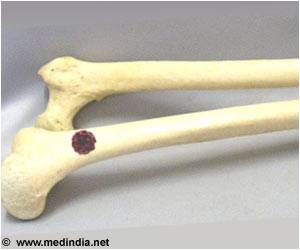Cold weather worsens the pain in old bone injuries due to nerve sensitivity, reduced circulation, and inflammation.
- Cold temperatures heighten nerve sensitivity, increasing pain perception
- Thicker synovial fluid in winter reduces joint mobility, causing stiffness
- Proper exercise, hydration, and warmth can help ease winter-related joint pain
Nature's wrath-The effect of weather on pain following orthopaedic trauma
Go to source).
Increased Sensitivity to Pain in Winters
A primary reason for heightened pain during winter is the effect of cold temperatures on nerves. When temperatures drop, nerve endings become more sensitive, making the pain from old injuries feel more intense. The brain receives stronger pain signals, leading to a heightened perception of discomfort compared to warmer conditions.Cold weather thickens synovial fluid, making joint movement harder and more painful! #jointhealth #medindia’
Thicker Synovial Fluid
Synovial fluid, which acts as a lubricant for joints, becomes thicker in cold weather. This increased viscosity makes joint movement more difficult and can cause tissues to rub against each other, leading to pain and stiffness.
Reduced Blood Circulation and Stiffness
Cold temperatures often result in decreased physical activity, which can weaken muscles and reduce flexibility, worsening joint pain. A study published in PubMed Central suggests that engaging in regular physical activity can alleviate arthritis pain and improve mobility. However, cold weather discourages movement, leading to stiffness and discomfort.
Increased Inflammation
Inflammation is a natural response to injury but can worsen in colder conditions. Low temperatures cause blood vessels to constrict, which may trap inflammatory substances in affected areas, increasing pain levels. In some cases, cold weather may also contribute to nerve inflammation, exacerbating discomfort.
The joints most commonly affected include:
- Knees
- Hips
- Spine
- Hands and feet
How to Manage Winter-Related Joint Pain
To minimize discomfort during winter, consider these preventive measures:- Stay Active: Engage in low-impact exercises like stretching, yoga, or walking to maintain joint flexibility and circulation.
- Dress Warmly: Keep joints insulated by wearing warm clothing and using heating pads when necessary.
- Stay Hydrated: Proper hydration helps maintain joint lubrication.
- Consult a Doctor: If pain becomes severe or persistent, seek medical advice for appropriate treatment options.

- Nature's wrath-The effect of weather on pain following orthopaedic trauma - (https://pubmed.ncbi.nlm.nih.gov/27318614/)
Source-Medindia











